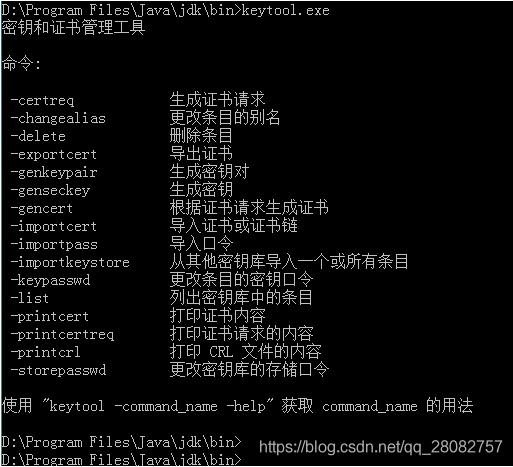基于SpringBoot解决CORS跨域的问题(@CrossOrigin)
在前后分离的架构下,跨域问题难免会遇见比如,站点 http://domain-a.com 的某 HTML 页面通过 的 src 请求 http://domain-b.com/image.jpg。
网络上的许多页面都会加载来自不同域的CSS样式表,图像和脚本等资源。
出于安全原因,浏览器限制从脚本内发起的跨源HTTP请求。
例如,XMLHttpRequest和Fetch API遵循同源策略。
这意味着使用这些API的Web应用程序只能从加载应用程序的同一个域请求HTTP资源,除非使用CORS头文件。
跨域的体现,在于它的域名不同或者端口不同,但要注意以下的形式为非跨域模式
http://www.example.com/index.html ==> http://www.example.com/login.html
二、Spring Boot跨域(@CrossOrigin)当然这里虽然指SpringBoot但是SpringMVC也是一样的,要求在Spring4.2及以上的版本
1、@CrossOrigin使用场景要求jdk1.8+
Spring4.2+
2、@CrossOrigin源码解析(翻译参考网络,文末列出参考地址)@Target({ ElementType.METHOD, ElementType.TYPE })@Retention(RetentionPolicy.RUNTIME)@Documentedpublic @interface CrossOrigin { String[] DEFAULT_ORIGINS = { '*' }; String[] DEFAULT_ALLOWED_HEADERS = { '*' }; boolean DEFAULT_ALLOW_CREDENTIALS = true; long DEFAULT_MAX_AGE = 1800; /** * 同origins属性一样 */ @AliasFor('origins') String[] value() default {}; /** * 所有支持域的集合,例如'http://domain1.com'。 * <p>这些值都显示在请求头中的Access-Control-Allow-Origin * '*'代表所有域的请求都支持 * <p>如果没有定义,所有请求的域都支持 * @see #value */ @AliasFor('value') String[] origins() default {}; /** * 允许请求头重的header,默认都支持 */ String[] allowedHeaders() default {}; /** * 响应头中允许访问的header,默认为空 */ String[] exposedHeaders() default {}; /** * 请求支持的方法,例如'{RequestMethod.GET, RequestMethod.POST}'}。 * 默认支持RequestMapping中设置的方法 */ RequestMethod[] methods() default {}; /** * 是否允许cookie随请求发送,使用时必须指定具体的域 */ String allowCredentials() default ''; /** * 预请求的结果的有效期,默认30分钟 */ long maxAge() default -1;}3、@CrossOrigin使用
Spring Boot下的请求处理控制器
package com.example.demo.controller;import com.example.demo.domain.User;import com.example.demo.service.IUserFind;import org.springframework.web.bind.annotation.CrossOrigin;import org.springframework.web.bind.annotation.GetMapping;import org.springframework.web.bind.annotation.RequestParam;import org.springframework.web.bind.annotation.RestController;import javax.annotation.Resource;/** * @Title: UserController * @ProjectName demo * @Description: 请求处理控制器 * @author 浅然 * @date 2018/7/2022:18**/@RestController//实现跨域注解//origin='*'代表所有域名都可访问//maxAge飞行前响应的缓存持续时间的最大年龄,简单来说就是Cookie的有效期 单位为秒//若maxAge是负数,则代表为临时Cookie,不会被持久化,Cookie信息保存在浏览器内存中,浏览器关闭Cookie就消失@CrossOrigin(origins = '*',maxAge = 3600)public class UserController { @Resource private IUserFind userFind; @GetMapping('finduser') public User finduser(@RequestParam(value='id') Integer id){ //此处省略相应代码 }}
后台返回的数据

前端跨域请求
<!DOCTYPE html><html> <head> <meta charset='utf-8' /> <title>demo</title> <script type='text/javascript' src='https://www.haobala.com/bcjs/js/jquery-3.3.1.min.js' ></script> </head> <body> <input type='button' value='测试' onclick='ajaxloding()' /> <div id='usermessage'></div> <script> var getdata=0; function ajaxloding(){ $.ajax({ async:false, type:'get', url:'http://localhost:8080/api/finduser?id=1', contentType: 'application/x-www-form-urlencoded', dataType: 'json', data: {}, success:function(result){ getdata=result.name }, error: function (errorMsg) {//请求失败时执行该函数alert('请求数据失败!'); } }); $('#usermessage').text(getdata) } </script> </body></html>
这样就解决了跨域问题,获取了后台的数据

参考
跨域 HTTP 请求
补充:springboot的@CrossOrigin('*')跨域仍然失效
项目中偶尔遇到即使加了@CrossOrigin跨域失败:
第一次遇到时间有限没解决:前端直接添加跨域处理。
jQuery.support.cors = true;
后续第二次遇到该问题,作为后端不能让前端解决跨域问题。
debug详细查找原因:发现在自定义拦截器返回失败,跨域失败。
明白该问题:需要以下知识。
(mvc拦截器的链路模式)
(Cors拦截器加载)
(自定义的拦截器加载)
(拦截器的加载顺序)
因为拦截器是链路模式:CrossOrigin也是拦截器在自定义拦截器之后。所以在自定义拦截器失败后,处理
跨域的拦截器未处理,造成跨域失败。
解决该问题的办法:添加filter ,因为Filter优先于拦截器执行,所以自己创建的拦截器不会影响跨域处理。
@Configurationpublic class CorsConfig { @Bean public CorsFilter corsFilter() { CorsConfiguration config = new CorsConfiguration(); config.addAllowedOrigin('*'); config.setAllowCredentials(true); config.addAllowedMethod('*'); config.addAllowedHeader('*'); UrlBasedCorsConfigurationSource configSource = new UrlBasedCorsConfigurationSource(); configSource.registerCorsConfiguration('/**', config); return new CorsFilter(configSource); }}
二:springboot升级到2.2.0,在新版本的springmvc中,把cors拦截添加到了拦截器的第一位,所以不会有该问题。
如果允许可以直接升级springboot或mvc版本。
以上为个人经验,希望能给大家一个参考,也希望大家多多支持好吧啦网。如有错误或未考虑完全的地方,望不吝赐教。
相关文章:

 网公网安备
网公网安备